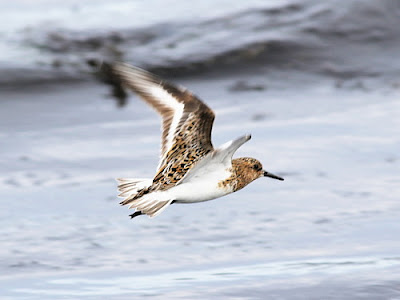A single Swallow was seen at Skaw. A walk around Norwick revealed that both the singing Chiffchaff and Marsh Warbler are still present. Robbie & JFC then very kindly informed us that Josh Jaggard had found a summer-plumaged Red-necked Grebe in Haroldswick Bay that we successfully saw this evening.
Eider family at Skaw
Arctic Terns at Skaw
Pale morph Arctic Skua at Lamba Ness
Heavily-laden Redshank at Norwick Beach
Red-necked Grebe in Haroldswick Bay






























































